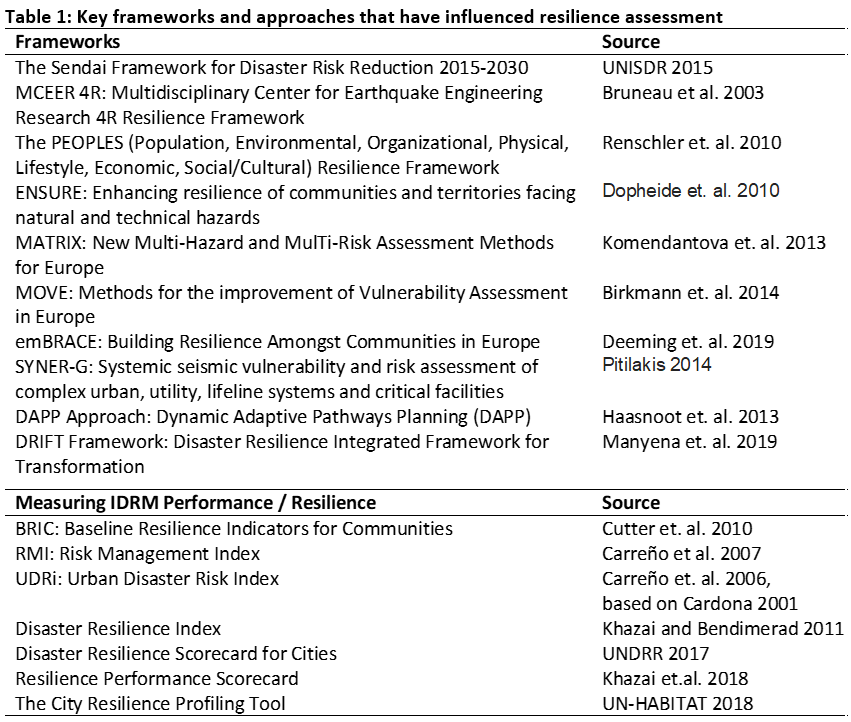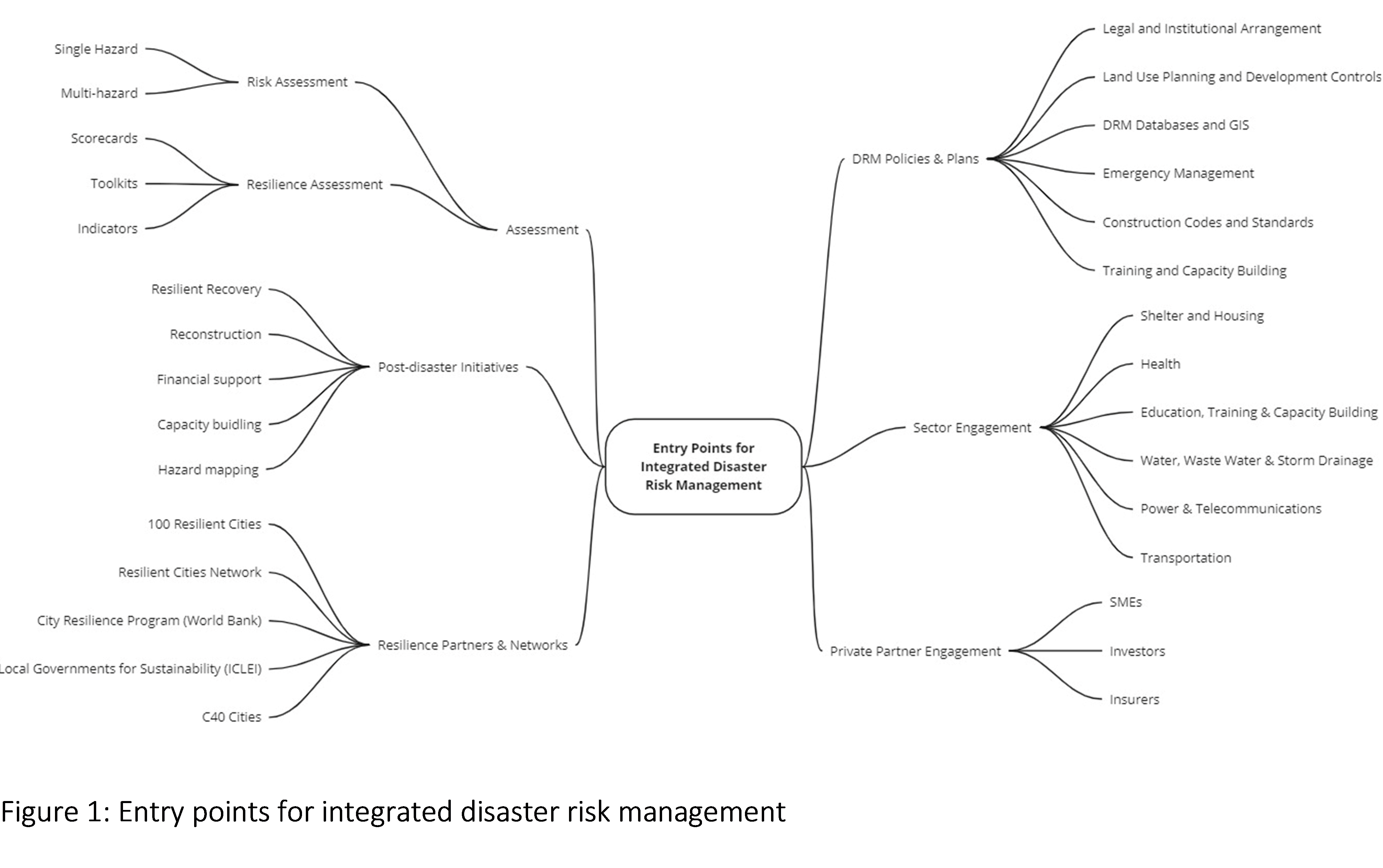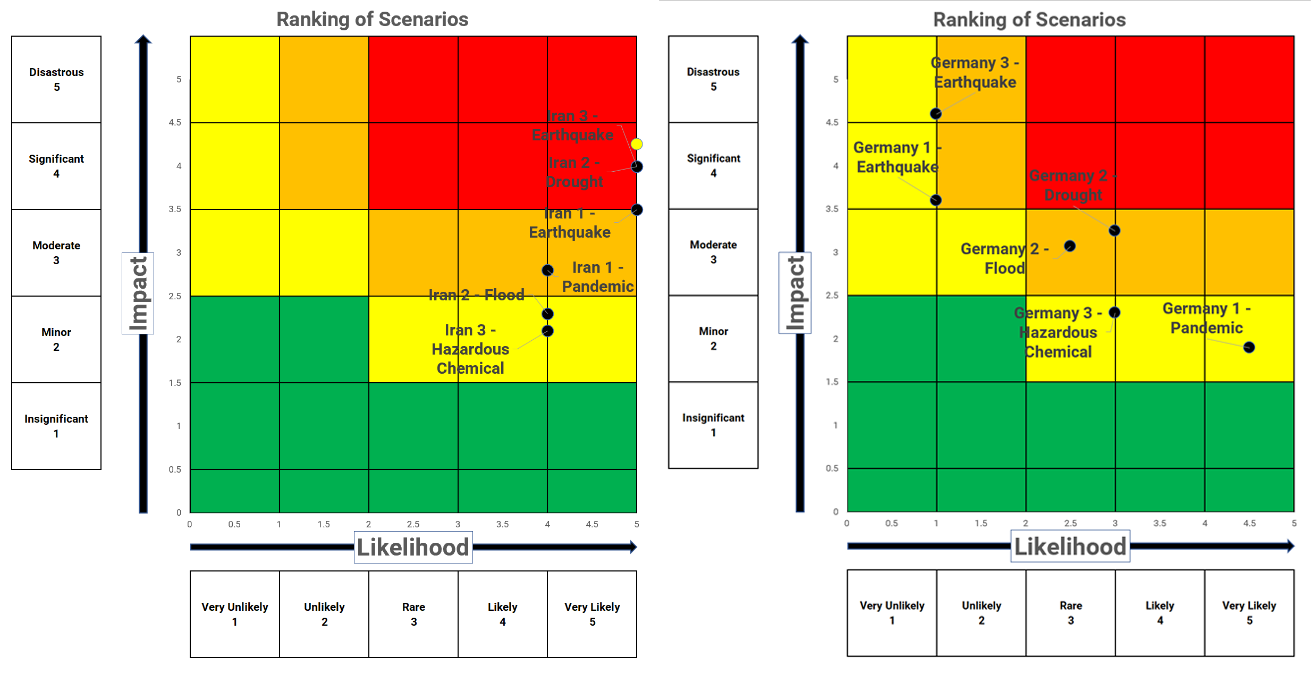Multi-Risk Indicators Approach for Urban Resilience Assessment – Interim Results
The INCREASE-MIA subproject focuses on developing a Multi-risk Indicators Approach for Urban Resilience Assessment. Research led by KIT in the project has produced the following interim results:
- Report on existing international IDRM indicator approaches: The report examines various international frameworks, including the Sendai Framework for Disaster Risk Reduction and the MCEER '4R' Resilience Framework, along with European frameworks like MATRIX and DAPP. It also delves into different indicator approaches for measuring IDRM performance, such as Baseline Resilience Indicators for Communities (BRIC), Risk Management Index (RMI), Urban Disaster Risk Index (UDRi), Disaster Resilience Index (DRI), Disaster Resilience Scorecard for Cities (DRSC), and Resilience Performance Scorecard (RPS).

- Report on entry points for action to operationalize development pathways toward IDRM: The report identifies key entry points for IDRM, including the integration of DRM into development policies, post-disaster initiatives, comprehensive risk and resilience assessments, engagement across sectors, active stakeholder participation and potential support from resilience networks and programs. .

Figure 1: Entry points for action to operationalize IDRM . - Report on state-of-the-art approaches to operationalize development pathways towards IDRM: The report focuses on IDRM into development processes, aligning with the UN's definition of resilience and supporting Sustainable Development Goal 11 to create inclusive, safe, resilient, and sustainable cities. The report explores frameworks and indicators for risk and resilience assessment, including the Disaster Resilience Integrated Framework for Transformation (DRIFT), and highlights adaptive resilience planning with approaches like the multi-criteria decision making Risk Matrix Approach and the Dynamic Adaptive Policy Pathways (DAPP) approach. .

Figure 2: Ranked Disaster Scenarios following Risk Matrix Approach. - Report on operationalizing the IDRM framework using a performance-based scorecard approach: This report explores the operationalization of an IDRM framework through a performance-based scorecard approach. It highlights key indicators for measuring risk management performance, disaster resilience, urban risk, and city resilience.
- Working Paper on Earthquakes, IDRM and the Impacts of Major Urban Earthquakes in Iran and Germany: This study compares earthquake risks and responses in Iran and Germany, highlighting the critical role of Integrated Disaster Risk Management (IDRM). Iran's high seismic activity has led to catastrophic events like the 1990 Manjil-Rudbar, 2003 Bam and 2017 Kermanshah earthquakes, revealing deficiencies in building standards, emergency preparedness, and public awareness. Conversely, Germany's lower seismic risk is met with robust preparedness and response systems. The analysis emphasizes the need for stringent building codes, public education, and stakeholder involvement in IDRM. Lessons from both countries underscore the importance of comprehensive planning and implementation of disaster risk reduction measures, adaptable to various hazards, guiding policymakers in enhancing resilience against earthquakes and other disasters.
-
6. Report on common basis & understanding on multi-hazard/multi-risk definitions, methods, tools, and concepts: The report establishes a common understanding of disaster risk reduction terms and concepts among various stakeholders. It emphasizes Integrated Disaster Risk Management (IDRM), as a holistic, multi-sectoral approach for managing hazards, involving risk assessment, management, communication, governance, and financing. The report also reviews global multi-hazard risk assessment tools, approaches, and concepual frameworks.
Associated institute at KIT: Institute of Photogrammetry and Remote Sensing (IPF)
Author: Trevor Girard (Jan 2024)
Project website: https://www.increase-project.com/

